In August 1864 the New Castle & Beaver Valley Railroad (NC&BV), a 14.98-mile railway connecting New Castle to Homewood Junction, was completed along the western bank of the Beaver River and opened for service. The line branched off the main Pittsburgh, Fort Wayne & Chicago Railroad (PFW&C) at Homewood Junction in Beaver County to a point just south of New Castle in Lawrence County. The NC&BV was the first railroad in active service in Lawrence County.
Several additional branch railroads were soon joined at the New Castle terminus, which became known as Lawrence Junction and was located near Mahoningtown at the confluence of the Mahoning and Shenango Rivers. Those railroads included the Erie & Pittsburgh Railroad (E&P), which was extended down from Erie along the west bank of the Shenango River, and the Lawrence Railroad, which followed the southern bank of the Mahoning River up to Youngstown.
Within a few years the PFW&C, NC&BV, E&P, and the Lawrence Railroad all came under lease to the Pennsylvania Railroad (PRR) after a series of consolidations and mergers. With these acquisitions the PRR or “Pennsy” was able to expand its growing empire north to Lake Erie and west into Ohio and beyond. The PRR, founded in 1846 and headquartered in Philadelphia, eventually merged with or had interest in over 800 smaller railroad companies. At its peak the powerful company had a budget larger than the federal government, controlled over 10,500 miles of track, and had 250,000 employees on its payroll.
At Lawrence Junction the PRR set up a small rail yard with a passenger and freight station, additional sidings, minor repair shops, and a boarding house/hotel. The facilities were located on property that was formerly part of the old Pitzer homestead. Lawrence Junction quickly grew in size and was located just across the Shenango River from a rival railway center known as New Castle Junction. Others railroads soon extended out from Lawrence Junction. One of those was the New Castle & Franklin Railroad (NCF), later known as the Western New York & Pennsylvania (WNY&P), which was opened in 1872 and followed the Neshannock Creek to the north up into New York. Another was a branch of the Erie Railroad (ERIE) that was completed in 1889 and followed the east bank of the Shenango River to connect with the Erie mainline in Sharon. All these railroads became part of the PRR’s regional Erie & Ashtabula Division (E&A), created in 1881 and headquartered at Lawrence Junction (until 1900).
In mid-1891 the PRR began moving its major repair facilities from the crowded area of Allegheny City (now the North Side of Pittsburgh) to Lawrence Junction, and also opened a new passenger depot in early 1895. Lawrence Junction really blossomed now and became a bustling center of activity. In 1906 additional tracks were laid to enable for increased storage of freight cars. The following year the PRR began a $200,000 renovation of the facilities to include to a new turntable/roundhouse, updated repair shops, and a modern electric power plant.
An article in New Castle News of April 24, 1908, reads, “The new turntable was placed in operation yesterday. It is 82 feet in length and is ample in size to turn the largest engine on the entire Pennsylvania system. Electricity alone is used in its operation. Although the roundhouse is not altogether finished, it is being occupied. The new building is a credit to the E. & A. division and presents an exceedingly handsome appearance. It has a capacity for 26 locomotives. The new addition to the shops is also finished.” The article goes on to explain, “One dynamo is the new power plant that is now running, and ample current thus provided. Nearly all the machines at the “new Lawrence Junction” will be operated by electricity.”
In early 1910 the PRR decided to expand and open a new classification yard so it could handle additional freight trains headed south/east. The PRR used its clout to acquire or have condemned various properties in the Willow Grove/Moravia area. The new “Moravia Yards” were to be built just south of the railroad bridge over the Mahoning River and extending all the way down to Moravia (near modern day Route 168). When this new yard (or “yards”) was generally completed in late 1912 it established Lawrence Junction as one of the largest such facilities in the entire country. The aging passenger depot at Lawrence Junction was closed as a new station was also opened south of the Mahoning River.
It was also necessary to replace the old two-track PRR railroad bridge with a larger span as well. Work commenced in 1912 and the massive new bridge, supported by eight large piers and two abutments, was constructed by the American Bridge Company – a subsidiary of the U.S. Steel Company – and erected right alongside the old span. It was one of the largest railroad bridges ever built in the region. Two of its tracks were in use by early 1913 before the old span was demolished to make room to complete the remainder of the new bridge.
In early 1916 the PRR became the defendant in a lawsuit brought by W. H. Cox and several other property owners (most residing on the old Ephriam Philips farm) who felt they were wronged when the railroad forcibly acquired their lands to build the new classification yards. In dispute was the value per acre of the lands “taken” by the PRR. The first verdict resulted in the property owners being awarded a victory and a total of $10,375. The PRR fought for a second trial and that backfired as the award was increased to $13,446. Further legal disputes continued for some time.
Activity at Lawrence Junction, particularly passenger service, steadily slowed in the 1920’s coinciding with the increased use of the automobile and bus service. By April 1928 the PRR closed the passenger station at Lawrence Junction and opened a new depot nearby at New Castle Junction. The freight and repair facilities remained in service at Lawrence Junction but were slowly phased out – especially with the sharp decline of the railroad industry beginning in the 1950’s. I believe the roundhouse and other facilities all closed over time and torn down sometime in the mid-1960’s.
In April 1968 the PRR – after 122 years of existence – merged with the rival New York Central Railroad to form the new Penn Central Transportation Company (Penn Central). Further reorganization saw Penn Central come under control of Consolidated Railway Corporation (Conrail) in 1976 and then the Norfolk Southern Railway (NS) in 1999. Today the facilities are all gone and a few daily trains of the Norfolk Southern rumble through the barren area that once was home to one of the busiest rail yards on the East Coast.
To read a few snippets of information about Lawrence Junction in January 1891 click on: LAWRENCE JUNCTION NEWS ARTICLE. Life around this and other rail yards was certainly never dull. To read a curious article about a suspected crime occurring near Lawrence Junction in 1891 click on: LOOKED LIKE MURDER ARTICLE. To read about the opening of the new railroad bridge across the Mahoning River click on: BRIDGE COMPLETED ARTICLE. Working at Lawrence Junction was a dangerous task. To read about a few of the many accidents that occurred to employees from 1893-1897 click on: EMPLOYEE MISHAP ARTICLES. To read about a loss of some railroad work at Lawrence Junction in 1987 click on: SHIFTING ABOUT ARTICLE. Railroad detectives had their hands full working in the yards while dealing with hobos, vagrants, drunks, thieves, and murderers. To read about a typical arrest in 1898 click on: LYING ON THE TRACK ARTICLE. To read about how two trains collided head-on just north of Lawrence Junction in August 1899 click on: CAME TOGETHER WITH A BANG ARTICLE. To learn more about the dismantling of the old PRR office/hotel building in 1901 click on: THE END APPROACHES ARTICLE. To read about what happened to a local PRR railroader who went missing during a run from Erie to New Castle in early January 1906 click on: LASHER’S BODY FOUND ARTICLE. To read about the PRR beginning preliminary work in January 1908 on the new yards at Lawrence Junction click on: PENNSY COMPLETES GRADE ARTICLE. To read a short article about how PRR men received their pay click on: PENNSY PAY DAY ARTICLE. To read an article from April 1908 that details the new facilities at Lawrence Junction click on: BIG IMPROVEMENTS ARTICLE. To read about a large ice house being erected at Lawrence Junction click on: NEW ICE HOUSE ARTICLE. To read a short article from early 1910 that mentions the proposed new “Moravia Yards” to be constructed south of Lawrence Junction click on: WORK ON MORAVIA YARDS ARTICLE. To read an article about the completion of the new Moravia Yards click on: COMPLETE YARDS ARTICLE.
 The Lawrence Junction Rail Yard was established in the late 1860’s and the facilities were located on property that was formerly part of the old Pitzer homestead. Lawrence Junction quickly grew in size and became an important railway hub. The location featured a passenger and freight station, additional sidings, minor repair shops, and a boarding house/hotel. Most of the railroads that ran through here were consolidated under the powerful Pennsylvania Railroad (PRR) system. This rail yard remained in use for many decades until it was abandoned by the 1960’s. (c1904) Full Size |
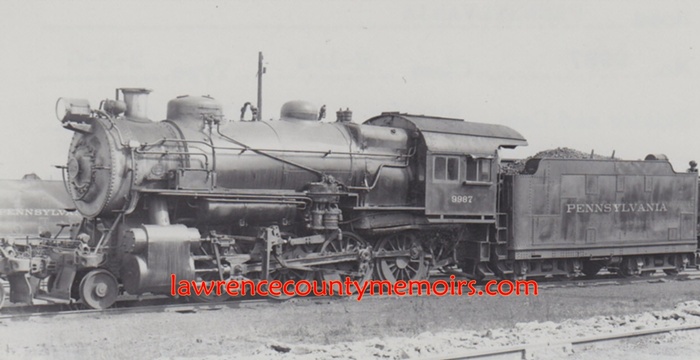 PRR steam locomotive #9987, an H-10 class delivered in early 1911, sits at Lawrence Junction. (Mar 1938) Full Size |
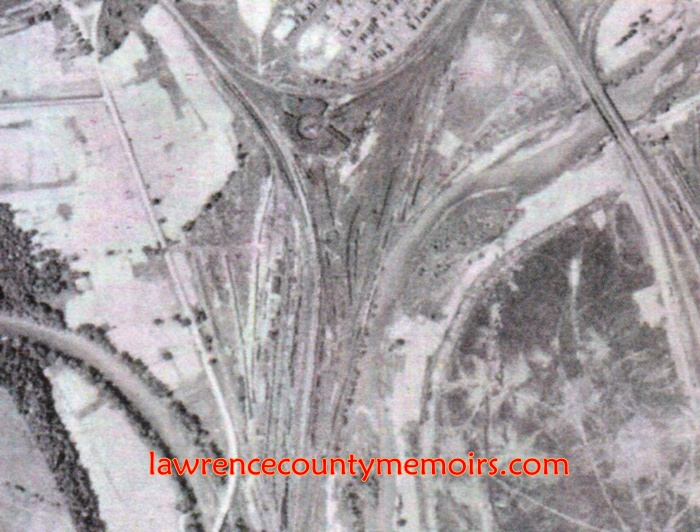 An aerial view of the old Lawrence Junction Rail Yard. The PRR roundhouse, just below the ballfield complex in Mahoningtown, can be seen at top of photo. The Mahoning River is seen at left, and the Shenango River – and the joint B&O/P&LE bridge – can be seen at right. (c1957) Full Size |
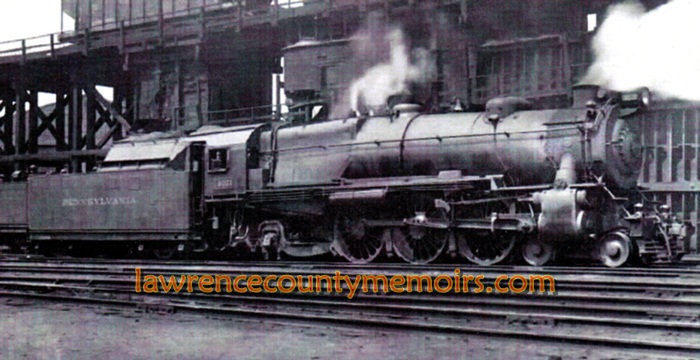 Lawrence Junction was a busy place in its heyday. When this new yards, to the south near Moravia, was generally completed in late 1912 it established Lawrence Junction as one of the largest railway facilities in the entire country. (c1910) Full Size |
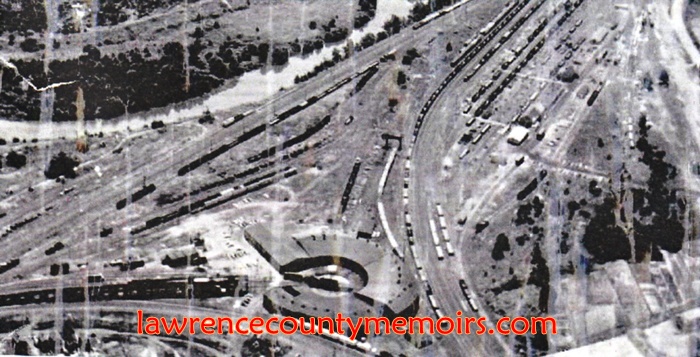 Another aerial view showing the upper yards and the large roundhouse at Lawrence Junction. (c1925) Full Size |
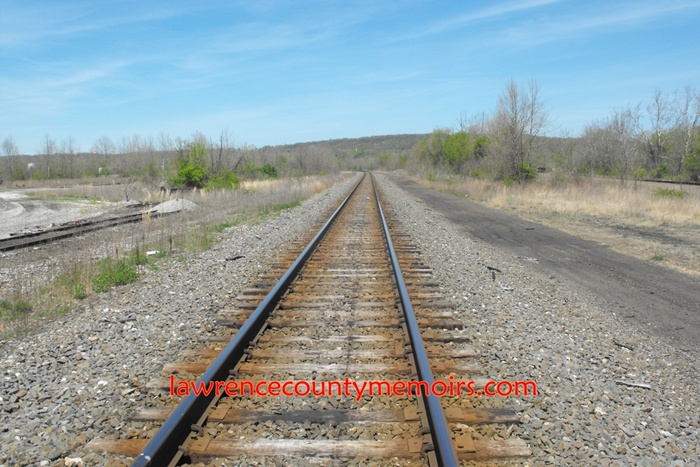 The former bustling PRR rail yards of Lawrence Junction are nothing more than barren property these days. This and the proceeding seven photos were taken just north of the railroad bridge across the Mahoning River – in what was once the lower portion of the main rail yard. (May 2013) Full Size |
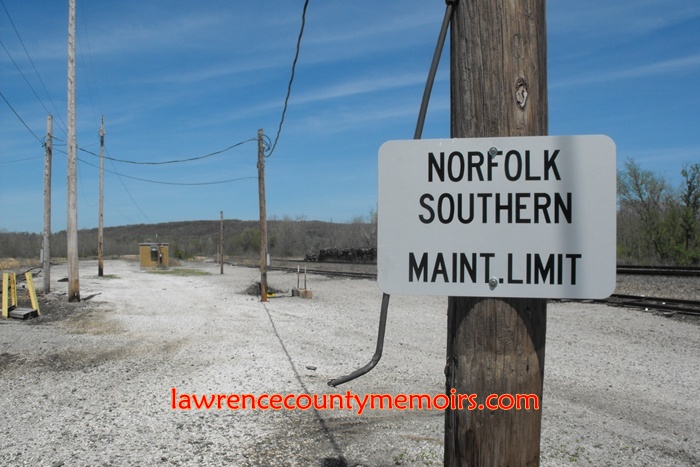 (May 2013) |  (May 2013) |
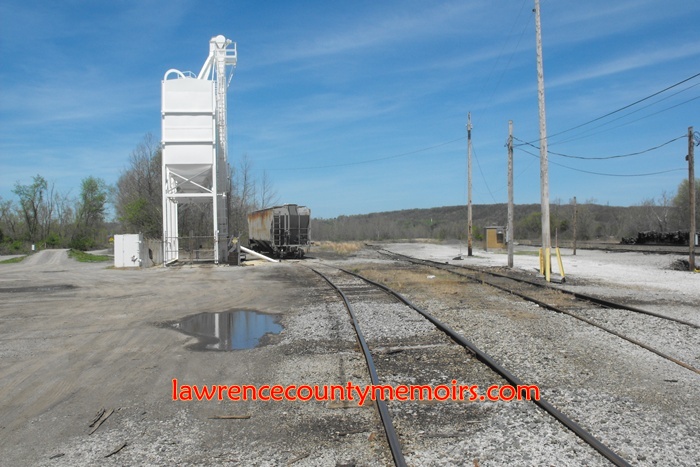 (May 2013) | 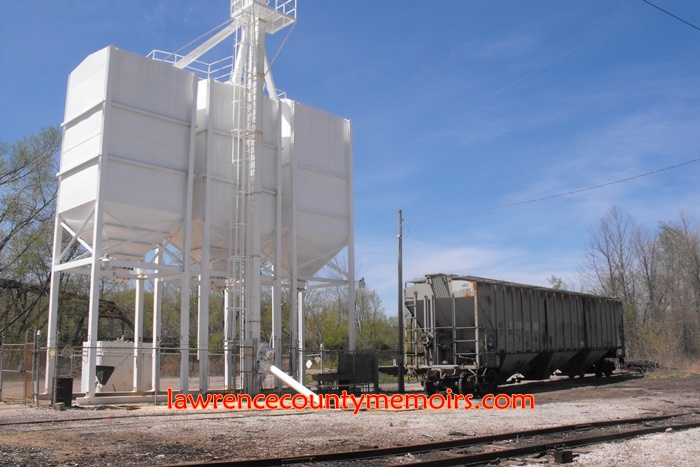 (May 2013) |
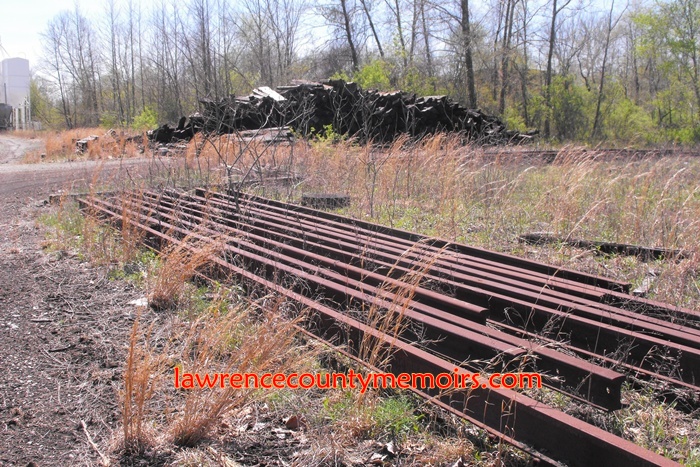 (May 2013) |  (May 2013) |
 (May 2013) Full Size |
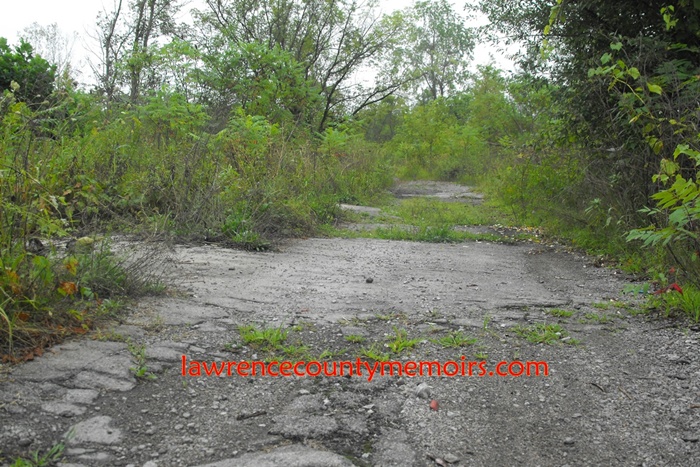 This photo – and the next eight – depict what remains at the former location of the PRR roundhouse at the extreme northern end of the Lawrence Junction Rail Yard. This location is just below the ballfields on South Wayne Street in Mahoningtown. (Aug 2013) Full Size |
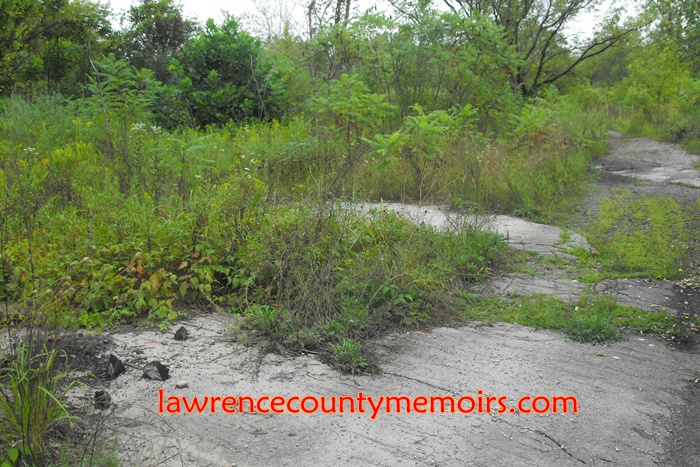 (Aug 2013) | 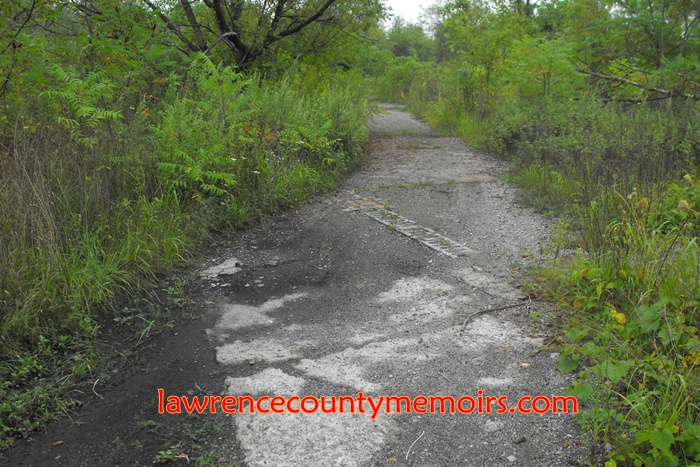 (Aug 2013) |
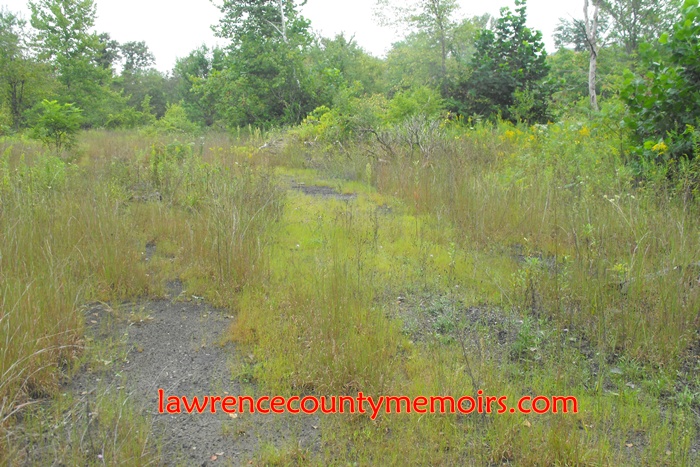 (Aug 2013) | 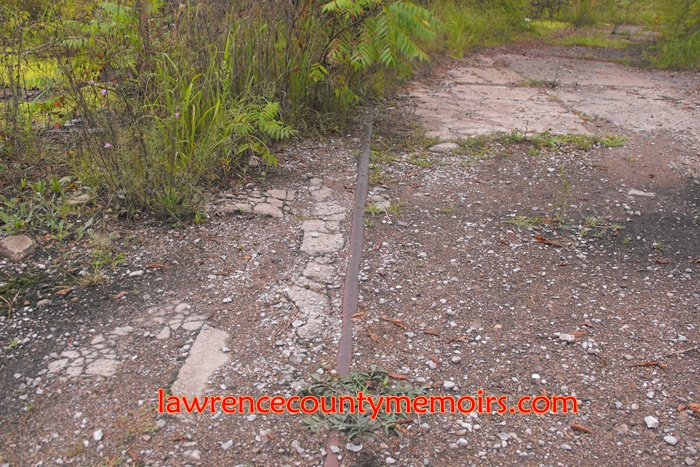 (Aug 2013) |
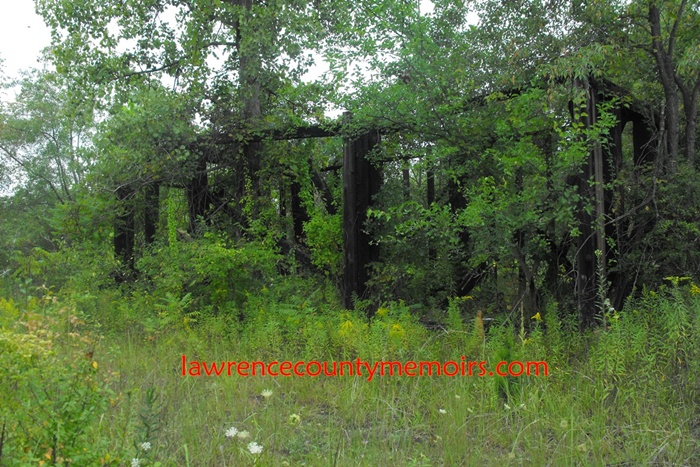 (Aug 2013) Full Size |
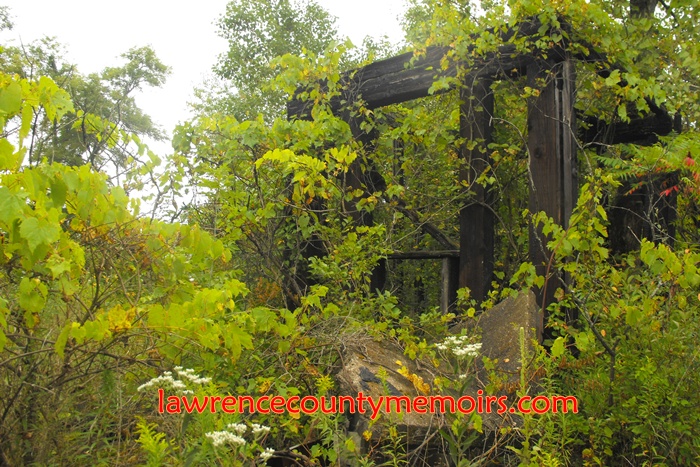 (Aug 2013) | 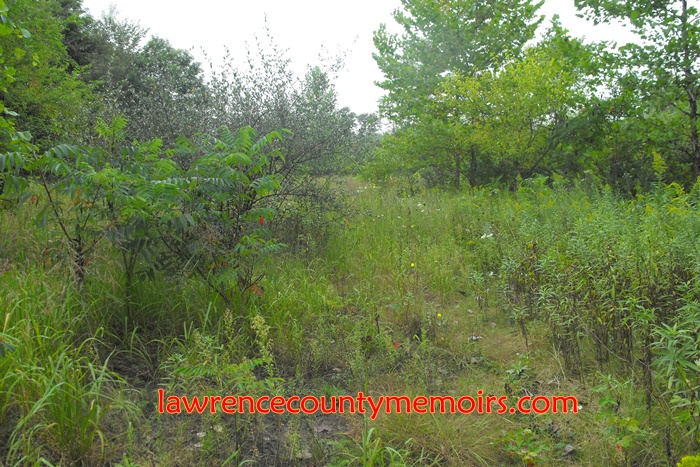 (Aug 2013) |
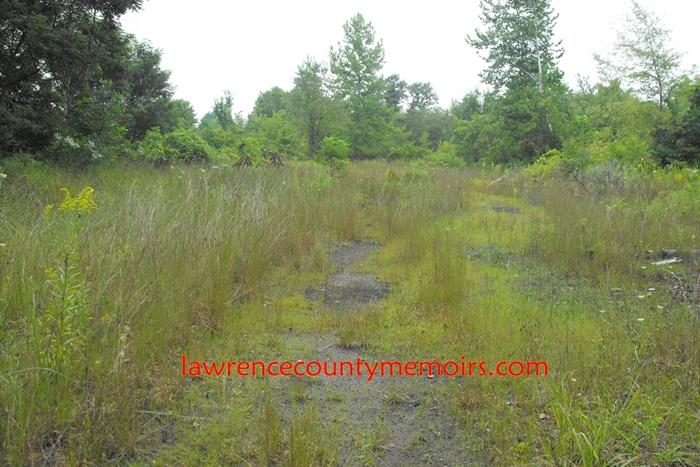 (Aug 2013) Full Size |




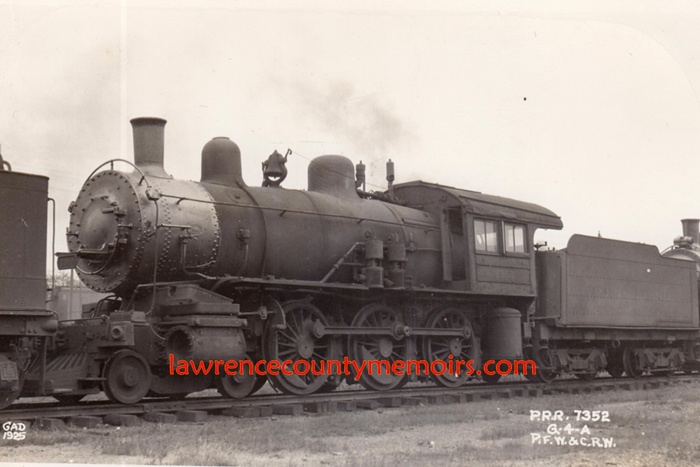
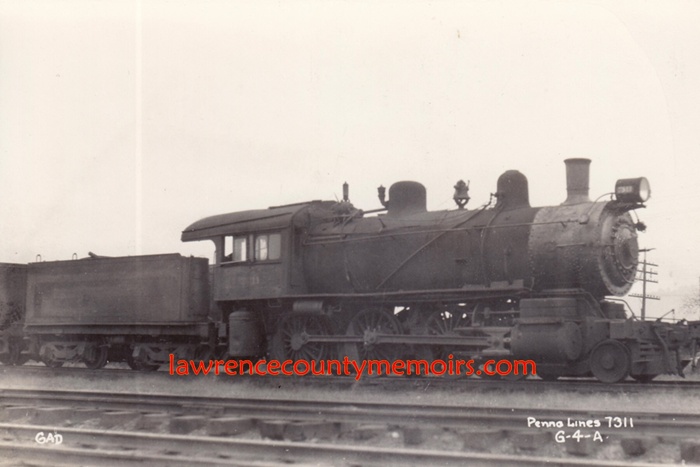
Comments
Charlotte Harding #
I remember my grandfather, Elijah taking me down to the round house and seeing the huge monster steam locomotives. I was about 5 or 6 at the time (1946) and to a little girl they were huge. Grandpa was an engineer on the Pennsylvania RR and was very proud of me.
I even got a ride in the steam engine with him. Glad you have found these old pictures. Our history is too soon forgotten.
James Love #
Hello, Charlotte please help me if you can? I have found some information online at about 2AM today and I am despite to tie the corners of these lines together. I live south of Franklin PA. I know the connections are there between New Castle PA and the Allegheny River, but I ran into walls. The Sandy Creek Rails to Trail ends just east of PA 8 with the Pittsburgh to Erie Trail going under it on the Allegheny Rivers east bank. Can you be of any help? Please if you can I thank you. I can text only until October 3rd. (412)969-8274 Also would you be able to help with the breakdowns of which were PRR, NYC and B&O RR’s in these areas? Also along US 422 there was a WPRR line that follows Muddy Creek that goes under Lake Author. Andy Carnegie also built the Butler Freeport line as well as the B&LE RR, UNION RR after he got burned by J.P. Morgan and RR Barrons. My brother has been doing over 18 years of study on the South Penn RR that never was finished from the Reading to the connection to the P&LE RR at Port Perry/Bessemer P&LE RR Trestle at and over Edgar Thompson Works in Braddock PA area.
Thank you
James
David McCORMICK #
The author of the text states: “I believe the roundhouse and other facilities all closed over time and torn down sometime in the mid-1960’s.” I was employed by the PRR in MAY 1965 at New Castle. I continued with successors, Penn Central and Conrail in a variety of capacities and locations. In 1965 through the merger in 1968 (if not longer) the engine house was still in operation – albeit in an increasing state of decay. There were both a Trainmaster’s office and Track Supervisor (M of W) on the second floor of the east wing of the engine house building in that era. I transferred east on the railroad system and lost track of specifics in New Castle by the bankruptcy in 1970. I hope this is useful,
Michael Doyle #
My father, Bob Doyle, first a fireman, then an engineer, took me to the B&O yard quite a lot, after he finally had enough seniority to hold a yard job. He even took me for a ride on an engine a couple times. His father, Frank Doyle, was a mechanic in the roundhouse. My mom’s father, George Hake, was a conductor for the PRR, fell in-between cars one night in 1955, was run over and killed. At least 2 of his sons, Alvie and Paul Hake, were engineers for the PRR, and several of my Hake cousins worked on the railroad as well. When the B&O shut down in New Castle, my father continued to work for The Chessie System (B&O and C&O merged) in Youngstown. The last year I can mentally nail down for sure of him still working in New Castle was 1972. I was 17, driving, stopped, waiting at a RR crossing, and when the engine came up last, there was my dad hanging out the window. Thank you very much for the article and the photos.
Dick Wilkison #
I worked out of this facility in the early 1960’s as a freight train brakeman. This was an active facility but due to the shrinkage of industry in western PA and eastern Ohio it had lost much of its usefulness. In the above photo you see the round house and in the distance the car shop. In front of the round house you see the “wreck train” which was stored at that location.
In front of the “wreck train” you see a track known as “cross cut” which connected the E&P line with the PY&A allowing movements from one line to the other.
Trains that ( in 1962) originated here included WL – local freight to Linesville, PA and back, the “NYP” a local to Jackson Center, PA and back which served coal mines near Mercer, PA, the “Bessemer local” which served the stone quarries at Bessemer, PA, the “high grade local”, which served the industries on the line connecting he PY&A at Wampum with the PRR main line at Homewood Jct., PA., “CNC” which ran between New Castle and Cleveland, OH. It also provided “pusher” service to assist heavy trains going to Erie and the E&P line.
Comment